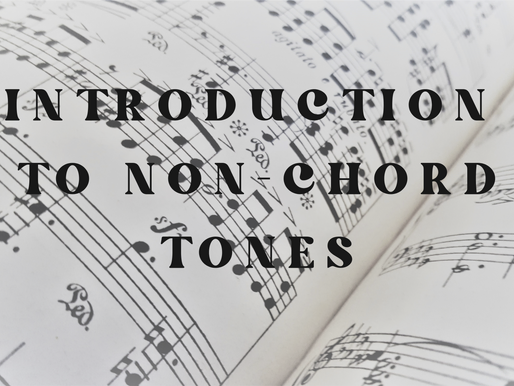Uncategorized
An Introduction to Non-Chord Tones
An Introduction to Non-Chord Tones
The best pianists have a thorough understanding of the music they play. Once you’ve learned basic theory such as the major scales and major and minor triads, you’re ready to take the first steps on a fascinating journey into the heart of music theory in order to more deeply understand the music you play.
Now it wouldn’t be called music “theory” if it didn’t involve what most theories involve – defining and analyzing distinct components of the subject at hand. Analyzing a piece includes understanding all the elements that comprise it – melody, harmony, rhythm and form. These elements are not independent of each other. For example, to understand the form (structure) of a piece, you must understand its harmony, as the chord progression helps define smaller units of the larger form. In order to understand a chord progression, you must be able to recognize and understand each chord as it occurs.
Some chords may seem obvious and easy to analyze, especially if one hand is playing a complete chord. In the following example, the left hand plays and repeats a C major triad. But what about the tones in the treble staff marked in parentheses that aren’t part of the left hand chord? How should we understand them?

To accurately analyze a chord in order to understand the progression it is part of, you must be able to differentiate two types of tones:
-
Chord tones – tones that are members of the current chord
-
Non-chord tones – tones that don’t belong to the current chord
There are quite a few categories of non-chord tones.
Four of the most common, and among the easiest to understand, are the passing tone, neighbour tone, escape tone, and appoggiatura.
The most straightforward way to distinguish these four kinds of non-chord tones is by how each is “approached” (i.e. what precedes it) and “left” (i.e. what follows it). Specifically:
-
Is the tone approached and left by step (interval of a second), or by leap (interval of a third or more)?
-
Is the tone left in the same or opposite direction as it was approached? If the tone is preceded by a lower tone, and is followed by a higher tone, then it was left in the “same direction” (i.e. the three notes involved are moving up).
Passing tones
(abbreviated “p”) are approached by step and left by step in the same direction.
Measure 1 below shows a passing tone between two chord tones (tones that belong to the G major chord).
Neighbour tones
(abbreviated “n”) are approached by step and left by step in the opposite direction.
Measure 2 shows a neighbour tone between two chord tones.
Escape tones
(abbreviated “e”) are approached by step and (usually) left by leap in the opposite direction.
Measure 3 shows an escape tone between two chord tones.
Appoggiaturas
(abbreviated “app”) are approached by leap and usually left by step in the opposite direction.
Measure 4 shows an appoggiatura between two chord tones.
Armed with these definitions, let’s look again at the first example:

We can now understand the parenthetical tones as non-chord tones.
In measure 1, the B is an escape tone – approached by descending step and left by ascending leap.
In measure 2, the D is an appoggiatura – approached by an ascending leap and left by descending step.
In measure 3, B and A are passing tones between the preceding chord tone (C) and the following one (G).
In measure 4, A is a neighbour tone – approached by ascending step and left by descending step.
We can clearly see that the C triad harmony does not change during these four measures, since the non-chord tones don’t fundamentally change the quality of the chord.
If you keep an eye out for these four very common non-chord tones, analyzing and understanding chords and chord progressions will become much easier!
Doug Hanvey is the director and founder of Creative Keyboardist, which now offers online beginner piano lessons for adults. Doug holds a Master’s in Adult Education and is a member of the Music Teachers National Association in the U.S.


